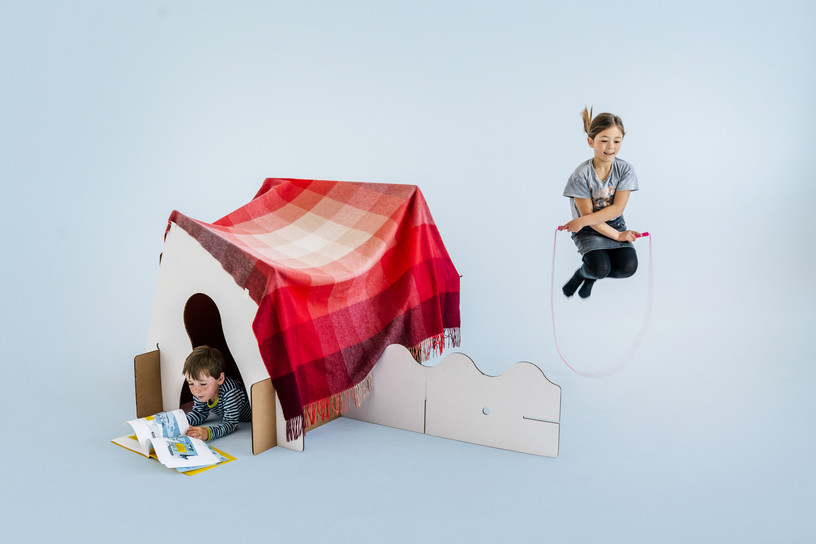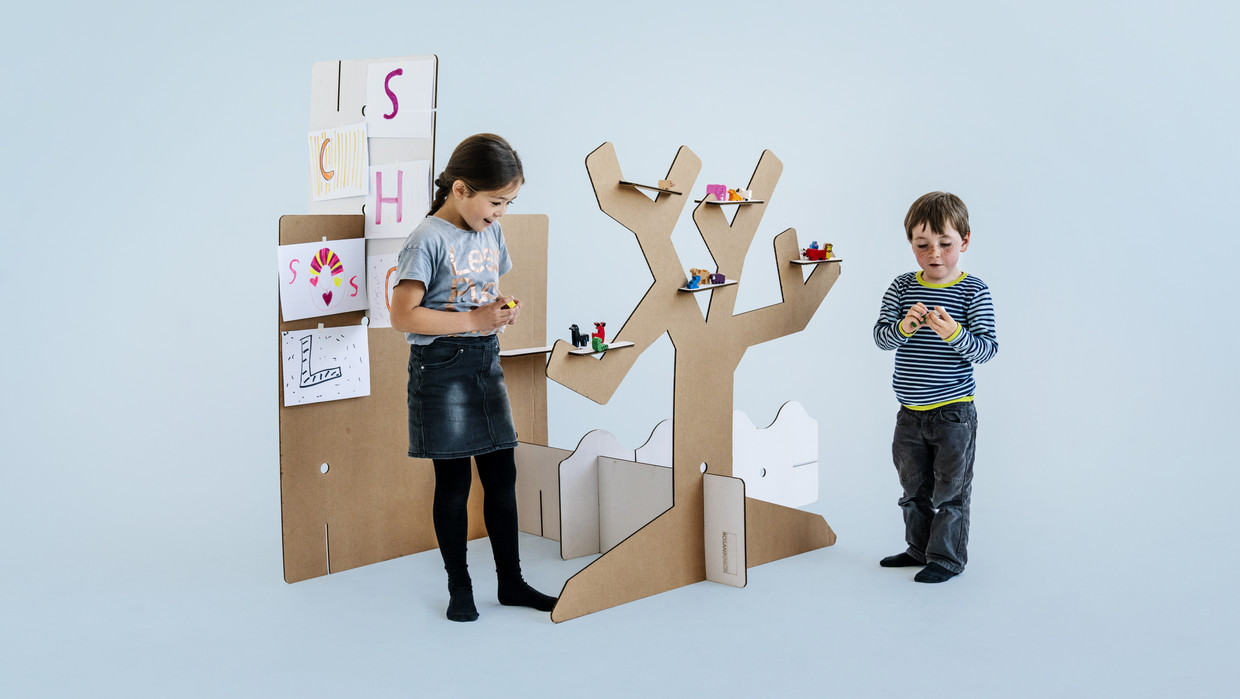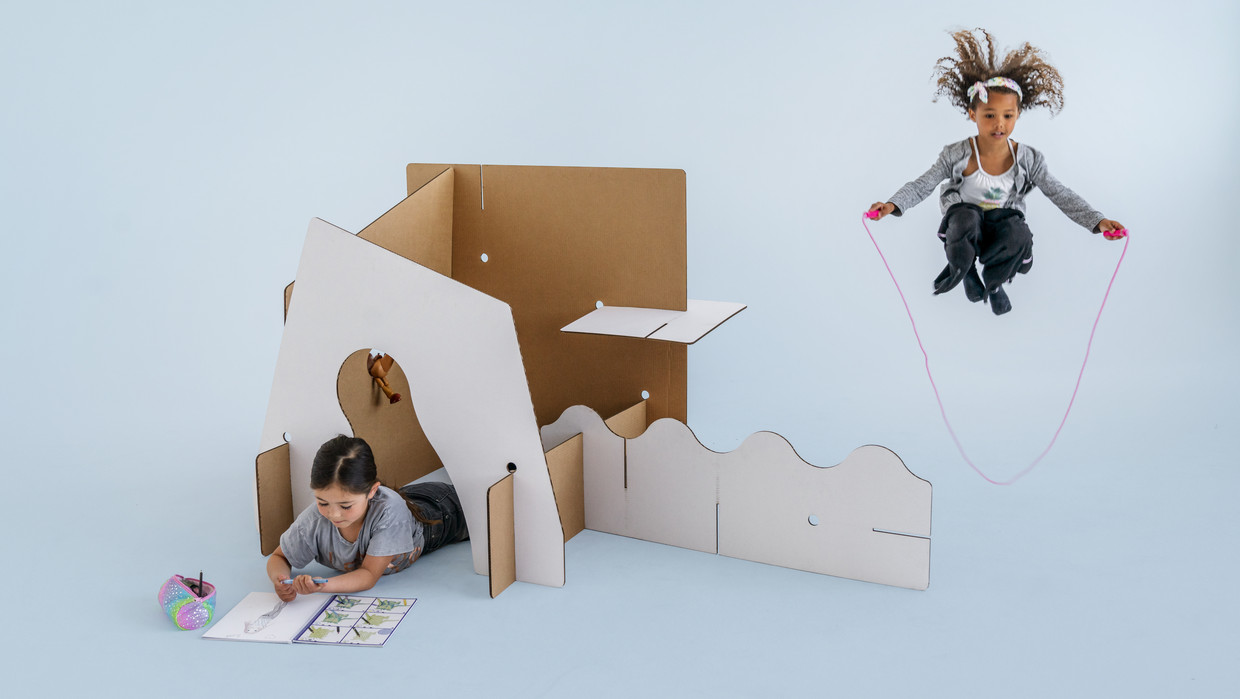The Wonder DIY cardboard elements allow each child to build their own best learning environment. The design empowers the child by actively engaging it in the architecture of their own school. It inspires reflection on how we, as learners, interact with our surroundings and how physical spaces support the learning process.
“A learning space should support the child to be active, play, explore, create, experiment. The space should be flexible and designed with children in mind. The Wonder elements allow for the child to create a space for learning – and being a child growing – in any context,” explains Rosan Bosch, Founder and Creative Director of Rosan Bosch Studio.
School closures around the globe have sent children home to study wherever there was room. Most children ended up in a traditional school setting, an uncomfortable chair, maybe too big, a desk, maybe too high, in front of a computer, or in front of the television broadcasting lessons. And now, maybe back at school, sitting fixed behind a small table, on a chair, on a distance.
“Our design creates a flexible space for the child to learn at home and solves a problem that many families have struggled with. We also need to reinvent schools and during school closures, many children have been self-directed and felt empowered. This is fuel for rethinking what schools could be, how they could be more flexible and offer room for differentiated learning journeys,” tells Rosan Bosch.
Rosan Bosch Studio has developed the Wonder DIY designs in collaboration with Stykka, an innovative furniture producer that has developed an adaptive manufacturing platform to print custom furniture.
Go to the project presentation to learn more about wonder and playful learning.








